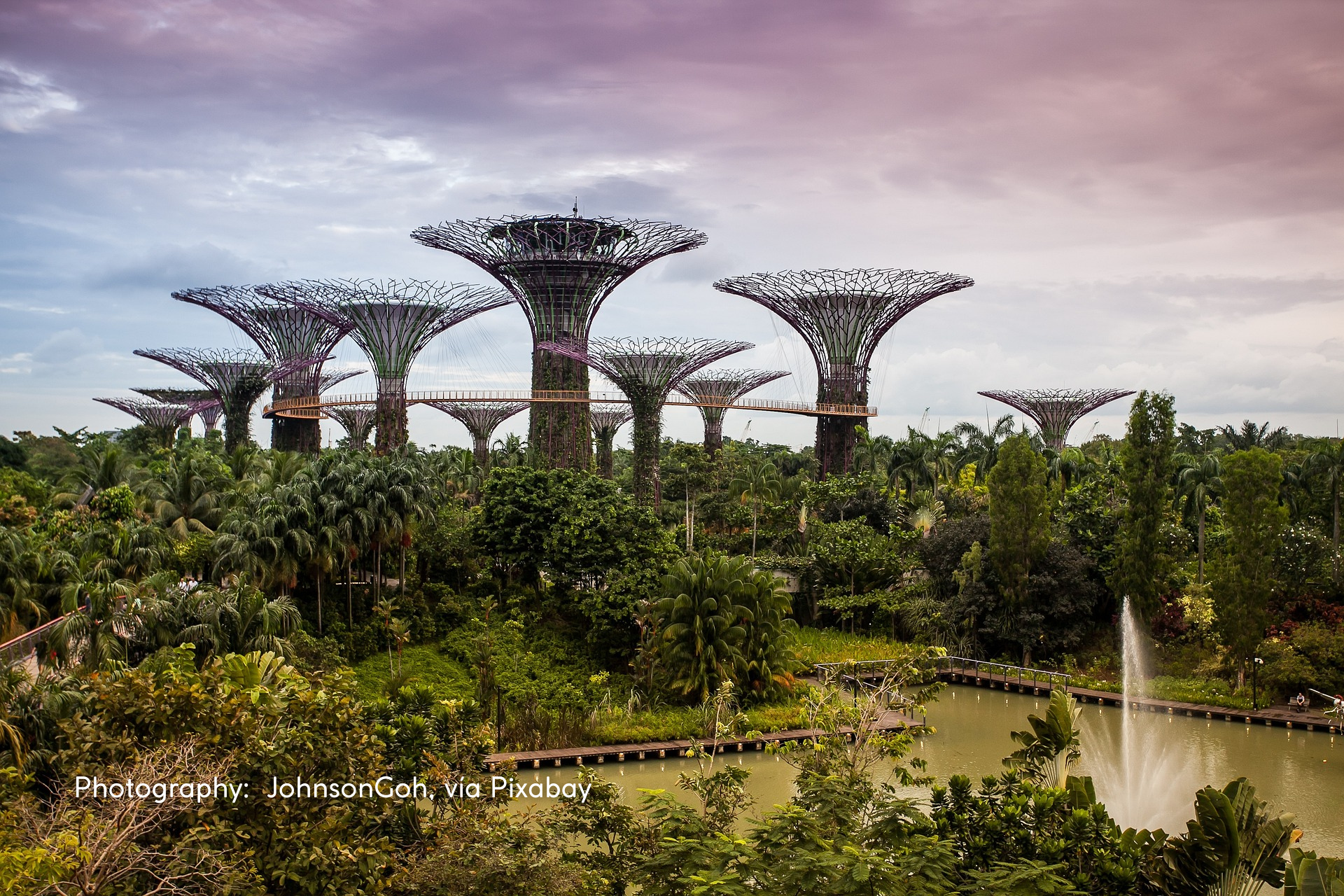
Biophilic Architecture to the Rescue of Human Well-Being
Explore how biophilic architecture integrates natural elements into built spaces to enhance well-being, connection to nature and health in “Biophilic Architecture to the Rescue of Human Well-Being” with Ivonne Walls.
Biophilic architecture is an innovative design concept that seeks to incorporate elements of nature and natural systems of irrigation, temperature, and sustainability (among others) into the built environment, creating spaces that promote human well-being, connection with nature and overall health.
It is an approach to architecture that seeks to bring the occupants of buildings closer with the nature that surrounds them to create a more productive and healthier built environment for people. The term “biophilia” was coined by American biologist Edward O. Wilson in his 1984 book “Biophilia”, which explores the inherent human tendency and need to seek connections with nature and other life forms from their earliest origins.

Landuum magazine office.
Photography: Paola Castro
This is the origin of the concept of what we now call biophilic architecture, which subsequently emerged as a response to the growing disconnection between humans and the natural world due to urbanization, modernization, and the increasing tendency of inhabitants to spend more time indoors.
Since then, both landscape designers and architects began to recognize the importance of integrating nature-inspired elements in and around buildings to create healthier and more harmonious environments that have proven to have a very important and positive impact on people’s physical and mental well-being.

Green roof.
Photography: Laura Paredis, vía Pexels
Uses and benefits: Biophilic architecture can be applied to various types of buildings, including homes, offices, schools, healthcare facilities, and public spaces. Here are some uses and benefits of biophilic architecture:
- Increase of well-being: Biophilic design has been shown to enhance mental and physical well-being. Spaces that incorporate natural elements like daylight, vegetation, and water features can reduce stress, anxiety, and improve mood.
- Enhanced learning: Educational spaces designed with biophilia in mind can support better learning outcomes. It has been shown that exposure and coexistence with natural elements improve concentration, cognitive function and information retention in students.
- Increased productivity: Biophilic environments in workplaces have been linked to increased productivity, creativity, and job satisfaction. Natural lighting and views of nature can also positively impact employee performance.
- Health benefits: Biophilic elements such as indoor plants, natural materials, and good air quality can contribute to better indoor air quality and reduce pollutants, leading to improved respiratory health.
- Connection to nature: Biophilic architecture helps people feel more connected to the natural world, even when indoors. This connection can foster a sense of stewardship and appreciation for the environment.
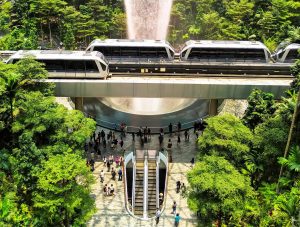
Singapore airport interior.
Photography: Pexels
- Stress reduction: Natural elements like greenery, water features, and natural textures have been found to reduce stress and promote relaxation, aiding in both physical and psychological recovery.
- Energy efficiency: Biophilic design principles often encourage the use of natural ventilation, daylighting, and passive heating and cooling strategies. This can lead to reduced energy consumption and lower utility costs.
- Aesthetic appeal: Incorporating elements of nature into architecture can enhance the aesthetic aspect of a space, creating visually pleasing and harmonious environments.
- Community interaction: Biophilic public spaces can promote social interactions, community gatherings, and a sense of belonging.
- Sustainable design: Biophilic architecture aligns with sustainable design principles by promoting resource-efficient strategies, reducing the environ – mental impact of buildings, and encouraging a holistic approach to design.
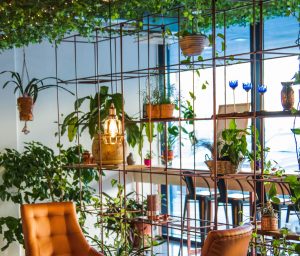
Incorporating vegetation.
Photography: Pexels
In summary, biophilic architecture seeks to bridge the gap between the built environment and the natural world, creating spaces that enhance human health, well-being, and connection to nature. This trend arises from recognizing the importance of designing spaces that prioritize human and ecological harmony.
Biophilic architecture and landscape design go hand in hand, as both concepts aim to create environments that promote human well-being, connection to nature, and sustainable living. These two disciplines not only can, but also must work together to create holistic spaces that seamlessly integrate natural elements and principles into the built environment.
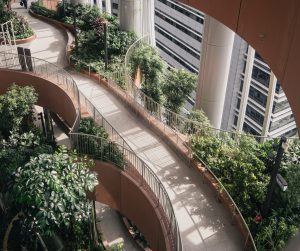
Building interior in Singapore.
Photography: Ethan P., vía Pexels
Common elements:
Seamless transition: Biophilic architecture seeks to blur the boundaries between indoor and outdoor spaces, creating a seamless transition between the built environment and the natural world. Landscape design plays a crucial role in achieving this transition by using elements like gardens, courtyards, terraces, and green roofs that extend the natural environment of the architectural design.
Natural elements: Both disciplines incorporate natural elements such as vegetation, water, rocks and other natural materials. With this, landscape design can enhance the biophilic experience, creating different sensory practices.
Sensory stimulation: Biophilic design aims to engage multiple senses, including sight, hearing, touch, and smell by incorporating natural stimuli. Landscape design can contribute to this sensory experience by introducing plants with different textures, colors, and scents, as well as designing elements with water (such as fountains, water mirrors, etc.) that produce soothing sights and sounds.
Enhanced health and well-being: Just as biophilic architecture promotes well-being and health through indoor design, landscape design can support these goals in outdoor areas. Well-designed landscapes can offer spaces for relaxation, exercise, and social interaction, contributing to improved mental and physical health.

Incorporating vegetation.
Photography: Pexels
“Biophilic architecture and landscape design are interconnected disciplines that work together to create harmonious, sustainable, and health-promoting environments.”
Patterns: Biophilic architecture often uses nature’s schemes and geometries to create visually pleasing and harmonious indoor spaces. Landscape design can replicate these patterns on a larger scale through pathways, patterns in plantings, and the arrangement of natural elements, reinforcing the biophilic connection.
Biodiversity and habitat: Landscaping can play a crucial role in creating habitats for local flora and fauna. By incorporating native plants, creating wildlife-friendly spaces, and providing nesting areas, it can enhance biodiversity and support different ecosystems.
Therapeutic spaces: Both biophilic architecture and landscape design can contribute to creating therapeutic environments. Healing gardens, meditation spaces, and outdoor retreats are examples of how landscape design can complement biophilic architectural elements, offering places for relaxation, reflection, and emotional restoration.
Environmental sustainability: Both share a commitment to environmental sustainability. Both disciplines prioritize resource-efficient design strategies, such as using native plants that require less water, promoting natural cooling and ventilation, and incorporating renewable materials.

Transplanting plant.
Photography: Pexels
In summary, biophilic architecture and landscape design are interconnected disciplines that work together to create harmonious, sustainable, and health-promoting environments. By blending natural elements, principles, and patterns, they can generate spaces that foster a deeper connection to nature while enhancing the overall quality of human life.
The awareness, understanding and implementation of this trend can not only reduce the negative effects with which human intervention has impacted the environment, but begin to build a more sustainable planet and a more conscious, healthy (physically, psychologically, and emotionally) and happy society that can fully enjoy the environment that surrounds it.
The conservation, improvement and respect for nature is everyone’s responsibility and we must consider it a non-renewable and precious good. It can exist without human beings, but not the other way around.
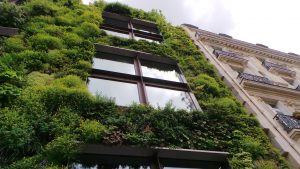
Green wall.
Photography: Pexels











